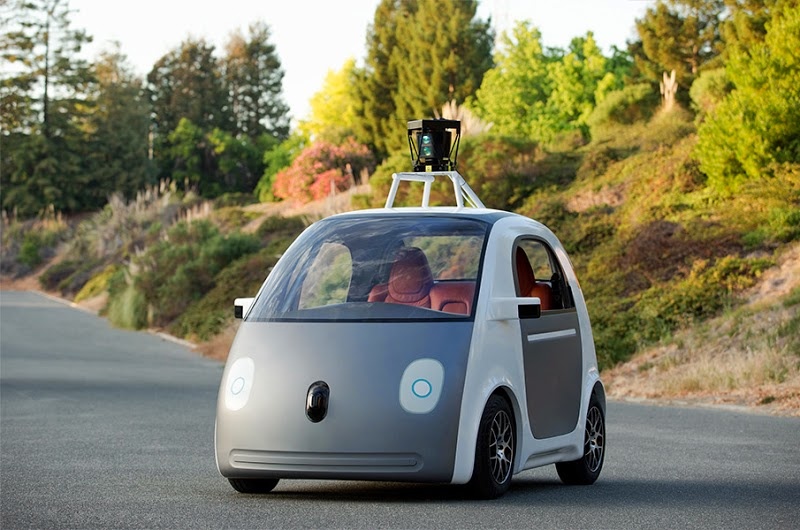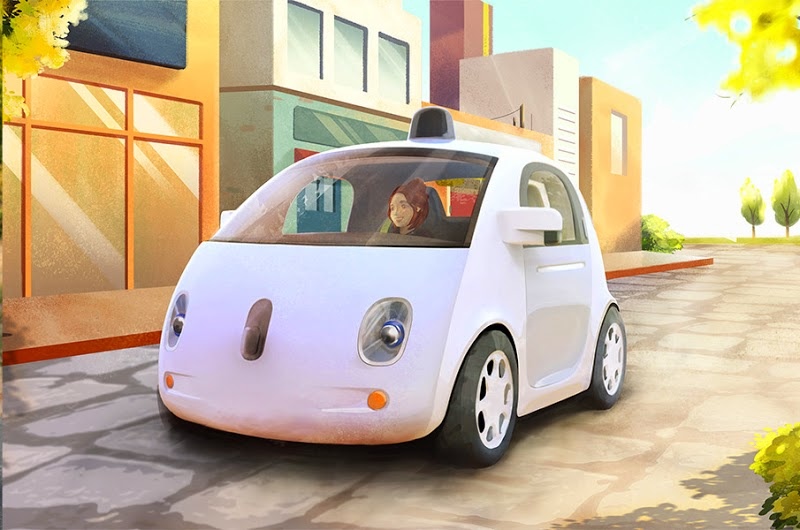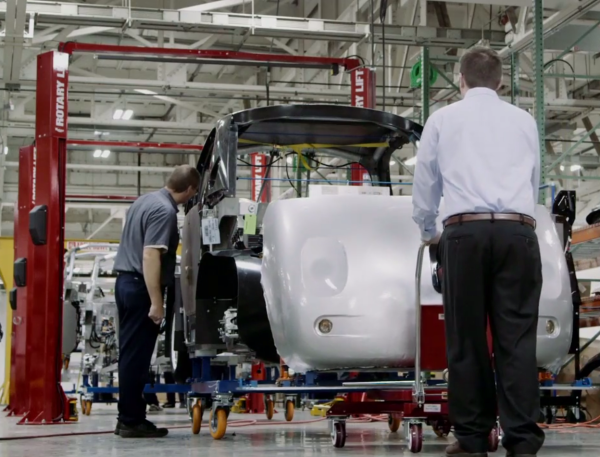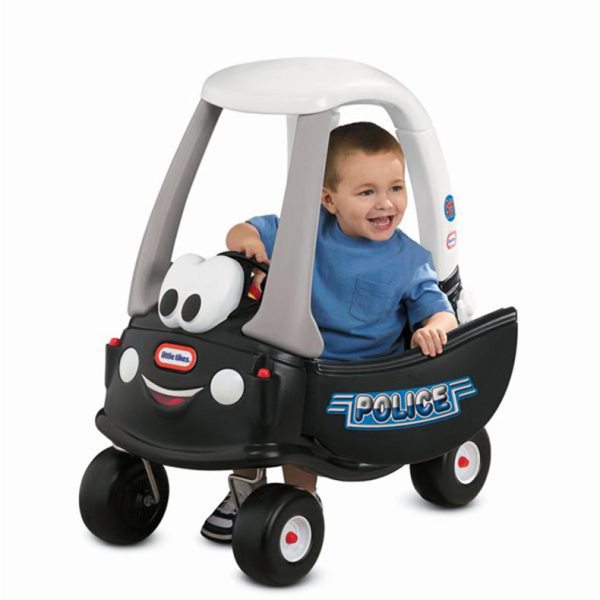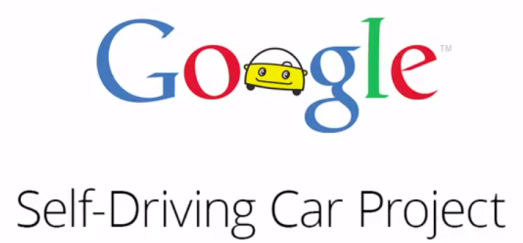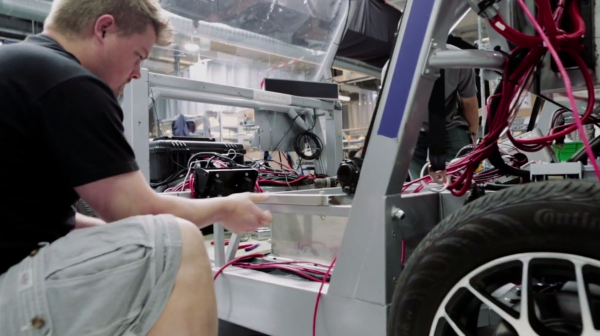Google’s self-driving autonomous cars have been conceived in Google X, a semi-secret research facility run by CEO Larry Page and dedicated to making skunkworks projects that could lead to major technological leaps in the years ahead, moonshots of sorts if you will. After years of development, the Internet giant has now revealed its design for self-driving car prototypes and they look damn cute.
Google’s Sergey Brin took to Code Conference last night to formally announce his company’s vehicle that has no steering wheel, pedals or gear shift. The design isn’t finalized yet because Google is essentially building its own car here from scratch rather than retrofit existing Toyota and Lexus designs, like the previous prototypes…
What you see top of post is Google’s “very early version” of the prototype self-driving vehicle, outfitted with cameras and advanced sensors giving it a 360-degree view of the road.
Pictured below: an artist rendition of the project.
These prototypes of vehicles have been designed from the ground up to drive themselves, Google said. All it takes is just push a button and they’ll “take you where you want to go,” boasted the search monster in a blog post Tuesday.
Watch volunteers take it for a test drive in Mountain View, California.
Additional images are available at the project’s Google+ page.
The car has sensors that remove blind spots and can detect objects out to a distance of more than two football fields in all directions, Google claims.
The autonomous vehicle resembles a Little Tikes car, no? (via TechCrunch).
Google will continue to refine its looks so this is just a reference design that’s still very much work in progress. The prototype has been made using off the shelf car parts, Google noted.
Even the logo itself is cutesy.
The windshield is all plastic and there’s some foam in the front to dampen any collision. Replacing shatterable glass with plastic and foam is not the only step the company has taken to protect a driver in case there is a crash.
For instance, the prototype vehicle’s speed is limited to 25 miles per hour.
The interior isn’t luxurious: there are two seats with seatbelts, a space for passengers’ belongings, buttons to start and stop, and a screen that shows the route.
Finalized versions will have manual controls in case something goes wrong.
The Internet company wants to build a hundred prototypes for testing this summer, with a little help from its partners. “If all goes well, we’d like to run a small pilot program here in California in the next couple of years,” says Google.
Recode has more:
The car — which was conceived and designed by Google, unlike the ones it previously modified — lacks many of the trappings of a normal car, and that includes the three essentials: A steering wheel, an accelerator and a brake pedal.
The company that designed the world’s simplest home page also decided to lose the mirrors, the backseat, the glove compartment and the stereo.
Google co-founder Sergey Bring gave the outlet’s Kara Swisher and Walt Mossberg an advance look and a test ride at Code Conference. The full Code Conference video is embedded below.
Again, it’s just a concept, much like Amazon’s flying drones.
“We’ll use these vehicles to test our software and learn what it will really take to bring this technology into the world,” promises the firm.
I have absolutely no doubt in my mind that this project will be commercialized at some point, especially given Google has spent hundreds of millions of dollars and years on research to make the project a reality.
See also: a Q&A with Google’s self-driving car head Chris Urmson and a liveblog with Sergey Brin’s thoughtful remarks on the project, Google X, moonshots, the NSA spying, patent trolls and more.
Will fully autonomous cars hit the streets during our lifetime, do you think?
